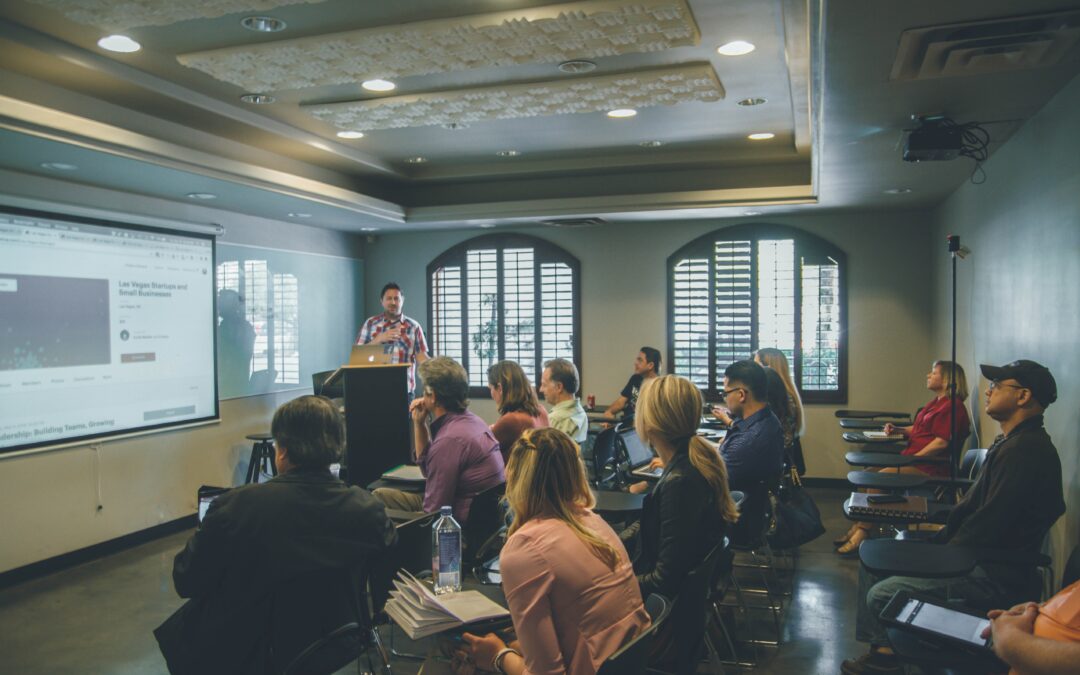Like many teachers, I like to view myself as an innovator when it comes to my instructional practices. As I grew from a novice to a more experienced practitioner, I prided myself in being willing to try new things while applying what I was learning from the experts in my field. Over time, as I continued to develop my teaching style and grow in my knowledge of the craft, I loved the rush that taking (reasonable and responsible) risks in my classroom could bring. I enjoyed the sense of danger that came with stepping away from the curated (or canned) curriculum and trying something new. I loved to think about the basic concepts to be taught, mixing in my knowledge and experiences with my current and past students, and pairing that with ideas gleaned from professional development and collaboration opportunities, and then climbing out on a limb and giving my idea a go. What could be better?!
This was especially true in my last teaching position before I moved into curriculum directing and supporting Curriculum Trak schools. I was in the 8th, 9th, and 10th grade Bible classroom where I had a lot of liberty to experiment and explore. I was free from externally mandated outcomes (like state standards), so I was able to apply myself to the internal goals of the Bible department while knowing that I had the leeway to try (and retry) things as needed. But, like many educators, I found that I still had a tendency to gravitate toward the favorite and familiar instructional strategies during the busy or stressful seasons. I wasn’t crazy!
One of my regular, old-faithful instructional tools was PowerPoint. I loved using PowerPoint. In my view, there was hardly a unit or even a lesson that couldn’t benefit from this technology tool. PowerPoint organized my unit, structured my lessons, supported discussion and group activities, and provided something for the students to see and even hear (of course I used sound effects!). I spent hours on my slide decks, and I would justify the time I invested into font choices, graphics, animations, and backgrounds by thinking about how much easier my lifewould be the next time I taught these things. I also told myself that lots of colors, images, and animations were the only way I could capture my students’ attention. Of course, every year, I found ways to improve on the PowerPoints created in previous years, update the slides, add animations, and I even began drawing from them to support my efforts to “flip” the classroom. See? PowerPoints are so useful!
As I transitioned out of the classroom into curriculum leadership, I found myself with more time to reflect on my previous practices, and I began realizing that my time investment hadn’t really paid off for me. Although I hoped the person following me would recognize the “gold mine” I left behind in my neatly organized folders on my classroom computer, I sometimes wondered whatever became of my electronic investments. As I became more and more engaged in working with teachers, gleaning from their experiences and strategizing how we could achieve more with less, my efforts to justify elaborate slide decks continued to evaporate. I had to admit that in many cases I could have achieved more student engagement and even promoted higher forms of critical thinking by simply writing a carefully crafted question on the chalkboard, or by making copies of relevant articles or other discussion prompts. But, what about the inviting slides, engaging animations, nifty sound effects? That had to count for something right? I still held onto hope.
Then, one day I excitedly received an updated chart of Dr. John Hattie’s research results with an expanded list of over 250 influences in a student’s life. I had been referencing this data for quite some time to promote discussion around teacher clarity (0.75, p. 2, “Teacher” column) and teacher efficacy (1.57, p. 1, “School” column). I had outlined the “hinge-point” value of 0.4 as a base-line target and suggested that teachers should always be leaning into those strategies that had been proven to have the greatest impact possible. I even underscored some of those influencers we simply have little control over (like most of the things in the “Home” column on p. 1). Finding this chart seemed to synthesize many of the findings I had been pulling from a variety of sources. That is when my eyes landed on the word “PowerPoint” (page 2, column 5) coming in at a very paltry effect size of 0.26. Dr. Hattie, after years of research, had the audacity to suggest that there are probably a lot of other things that could be more influential than PowerPoints.
Perhaps it was just the denial stage of grief that drove me to do it. Or, maybe it was as I entered the bargaining stage that I found myself digging into the other categories of influences listed in Dr. Hattie’s chart. A PowerPoint is not just a PowerPoint, right? Like any other tool or strategy, it all comes back to how it is used. It’s not all bad, is it? To be fair to myself and my many accomplished colleagues who find PowerPoints to be helpful, there are a lot of other possible influences in the 252 listed that could be accomplished, at least in part, by a well-developed PowerPoint slide deck. I am not suggesting that you just toss them all out and call it a complete and utter loss. But, as I entered the acceptance stage of my grief, I realized that the benefits to be gained did not really outweigh the investment required for my personal instructional practices. My PowerPoints became a focal point for my lessons, a major draw on my limited planning time, and a distraction from some of the personal interactions that could have deepened my relationships with my students, my understanding of their questions and concerns, and their life-time takeaways of the important concepts I was trying to teach.
I was grieving the lost opportunities and wasted time. I was grieving the hours and hours of time spent on creating PowerPoints well into the night. Ultimately, I was grieving missed opportunities – the many things I could have done or might have tried had I known that PowerPoints were not all I imagined them to be. There may have been some shame and regret in there as well. But, it was too late for me to go back to those days. I had, somehow, moved on to other things. How can good come from this despair? If I were using a slide here, I would find a great painting to represent my feelings and count it as art integration. So, I share my tale with other pilgrims for two reasons.
First, I think it is important to highlight and make room for the grief that often accompanies growing away from lesser practices toward better ones. As teachers engage with the ever-expanding research coming from our increasingly data-driven craft, there are likely to be many grief-fraught awakenings like mine. It can be hard to come to terms with the realization that the way we like to do things, even the way we were taught to do things, may not be the most beneficial or yield the best results. This grief can lead to questions about missed opportunities, wasted time, and the piles and piles of resources we have invested in that now seem cheap in comparison to the better things we are drawn to do. We need to make room for this reality. We need to make space to move away from the less favorable toward the greater good. We need to give ourselves permission, at times, to throw things away, delete files, and discard lesson plans. But, we also need to find ways to celebrate the good things our previous efforts yielded (It’s never all bad) even while pushing to become better.
Secondly, I offer my tale to underscore the power of data and collaboration in our efforts to learn and grow. Having access to information like the chart of effective teaching strategies can be a powerful tool to guide a teacher’s decision making. Hopefully, we have access to it sooner rather than later. Digging into the educational research like that of Dr. Hattie and so many others can help clarify the role technology can (and can’t) play in the classroom. It can help teachers prioritize relationships over systems or tools. It can help teachers focus their efforts on those things that have been proven to work while guarding against the latest trends or fads of our profession. It can provide a framework for making decisions, realizing opportunities, and setting realistic limits even as we strive for success.
It is true that growth can bring with it some grief as we realize we might need to push away from some familiar and comfortable things. But grief can be helpful as it pushes us towards new and improved practices. So, if you find yourself deleting and recreating, take heart! And, if you are looking to adopt some unused PowerPoint slides, I might know a guy.




